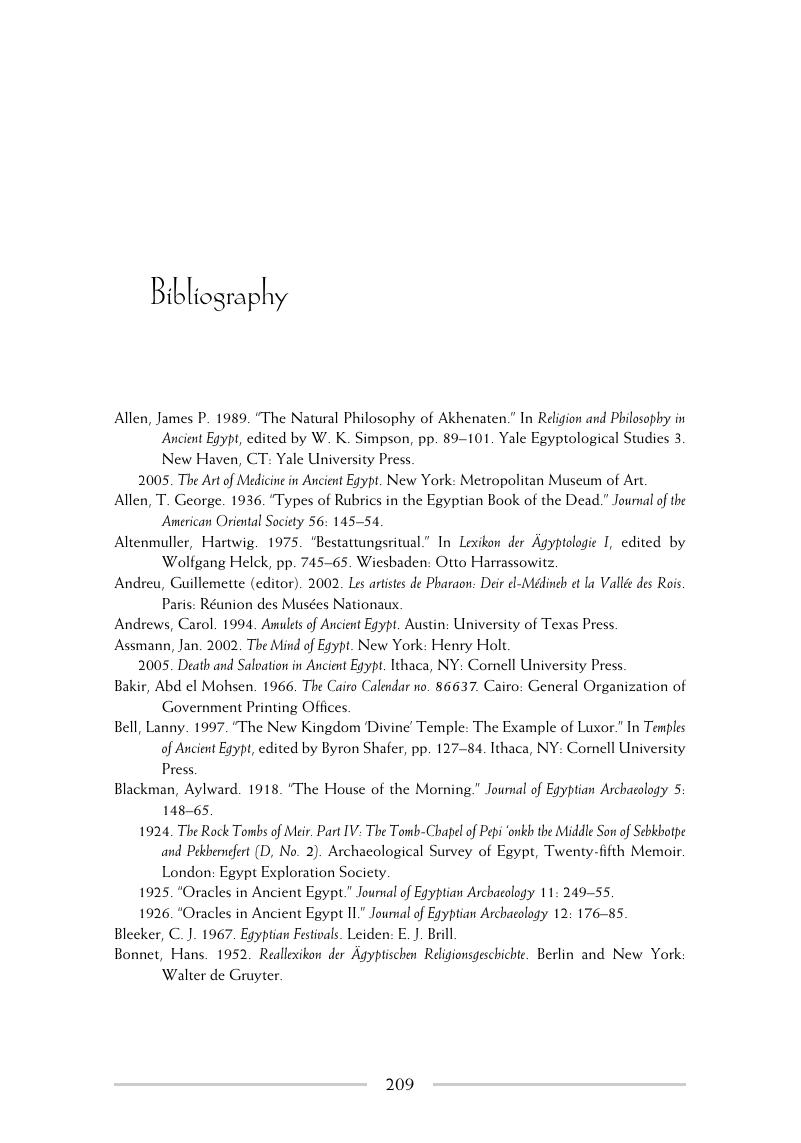Book contents
- Frontmatter
- Contents
- List of Maps, Plans, and Figures
- List of Color Plates
- Acknowledgments
- Chronology of Ancient Egypt
- Map 1 Egypt
- Map 2 Thebes
- Plans
- Introduction
- 1 The Egyptian Mind
- 2 Priests
- 3 Inside the Temple
- 4 Festivals
- 5 Contacting the Gods
- 6 In the Presence of the Gods
- 7 Death and Funeral Rites
- 8 Communicating with the Dead
- 9 Magic to Charm and to Kill
- 10 The Amarna Period
- Afterword: An Appraisal of Egyptian Religion
- Notes
- Bibliography
- Index
- Plate section
- References
Bibliography
Published online by Cambridge University Press: 05 June 2012
- Frontmatter
- Contents
- List of Maps, Plans, and Figures
- List of Color Plates
- Acknowledgments
- Chronology of Ancient Egypt
- Map 1 Egypt
- Map 2 Thebes
- Plans
- Introduction
- 1 The Egyptian Mind
- 2 Priests
- 3 Inside the Temple
- 4 Festivals
- 5 Contacting the Gods
- 6 In the Presence of the Gods
- 7 Death and Funeral Rites
- 8 Communicating with the Dead
- 9 Magic to Charm and to Kill
- 10 The Amarna Period
- Afterword: An Appraisal of Egyptian Religion
- Notes
- Bibliography
- Index
- Plate section
- References
Summary

- Type
- Chapter
- Information
- Religion and Ritual in Ancient Egypt , pp. 209 - 218Publisher: Cambridge University PressPrint publication year: 2011



